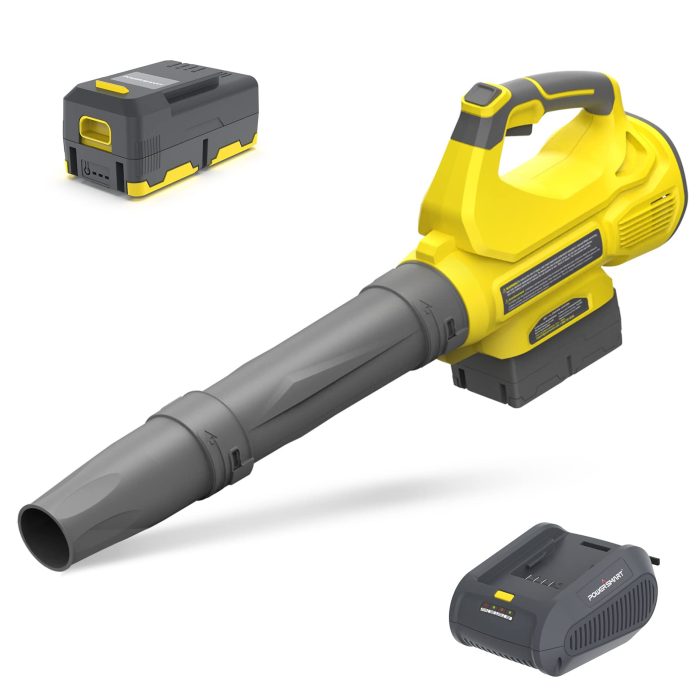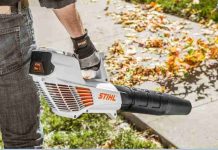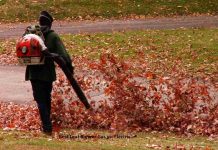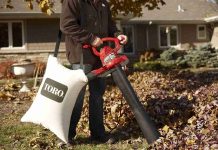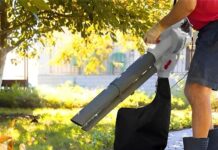Are you curious about the durability of a 40V leaf blower battery? Well, you’ve come to the right place! This article will shed some light on the burning question: how long does a 40V leaf blower battery last?
Whether you’re a seasoned gardener or a weekend warrior, knowing the lifespan of your battery is crucial for planning your outdoor projects. Join us as we explore this topic, arming you with the knowledge to make the most of your leaf-blowing endeavors.
Factors that affect the battery life of a 40V leaf blower
Regarding the battery life of a 40V leaf blower, several factors can influence how long the battery will last. These factors include battery capacity and technology, power settings, type and density of vegetation being cleared, weather conditions, and battery age and maintenance. By understanding these factors and taking the necessary steps to maximize battery life, you can ensure that your 40V leaf blower will perform at its best when needed.
Battery capacity and technology
The capacity and technology of the battery are essential factors to consider when determining the battery life of a 40V leaf blower. The capacity refers to the energy the battery can store, typically measured in amp-hours (Ah). A higher-capacity battery will generally have a longer runtime, allowing you to use your leaf blower for a more extended period before recharging.
In addition to capacity, the technology used in the battery can also affect its performance. Different types of batteries, such as lithium-ion or nickel-cadmium, may have varying levels of efficiency and durability. Lithium-ion batteries are known for their high energy density, longer lifespan, and lighter weight, making them a popular choice for leaf blowers. On the other hand, nickel-cadmium batteries may be more affordable but heavier and have a shorter lifespan.
Power settings
Most 40V leaf blowers come with multiple power settings that allow you to adjust the airflow and speed of the blower. The power settings directly impact the battery life, as higher power settings require more energy. Understanding the different power settings and their effects can help you make informed decisions about using your leaf blower while conserving battery life.
Low power setting: The low power is ideal for light-duty tasks such as clearing dry leaves or light debris. This setting provides a slower airflow, which requires less power from the battery. The low power setting can significantly extend the battery life, allowing you to complete small tasks without draining too quickly.
Medium power setting: The medium power setting is suitable for medium-sized yards or moderate vegetation. This setting balances airflow and energy consumption, providing enough power to handle slightly heavier debris or thicker grass. While the medium power setting may use more battery power than the low setting, it can still offer a considerable runtime.
High power setting: It provides maximum airflow and speed, making it ideal for tackling larger yards or more demanding tasks. However, it also consumes the most battery power. Using the high power setting sparingly and only when necessary is recommended, as it can drain the battery quickly.
Type and density of vegetation being cleared.
The type and density of vegetation being cleared can significantly impact the battery life of a 40V leaf blower. Different vegetation types require varying levels of power and airflow to clear effectively. Understanding the demands of the specific vegetation you are dealing with can help optimize your leaf blower’s battery life.
Grass: Clearing grass usually requires less power than other vegetation types. The low or medium power settings are often sufficient for grass, which allows for longer battery life. However, if the grass is wet or particularly dense, it may require higher power settings, thus reducing the battery life.
Leaves: Dry leaves are generally lightweight and easily blown away with minimal power. The low power settings often handle leaf-clearing tasks, providing a longer battery life. However, if the leaves are wet or matted together, it may be necessary to use a higher power setting, which can shorten the battery life.
Small branches: Clearing small branches requires more power and airflow than grass or leaves. Depending on the thickness and density of the branches, you may need to use medium or high power settings, which can impact the battery life.
Large branches: Attempting to clear large branches with a leaf blower is not recommended, as they are typically beyond the capabilities of these tools. Using a proper cutting tool is best to avoid strain on the leaf blower’s battery and motor.
Weather conditions
Weather conditions can also affect the battery life of a 40V leaf blower. Extreme temperatures and high wind speeds can impact the performance and efficiency of the battery, ultimately reducing its overall life. Understanding how weather conditions affect your leaf blower’s battery life can help you plan your outdoor tasks accordingly.
Temperature: Extreme heat or cold can affect the chemical reactions inside the battery, resulting in reduced battery life. It is generally recommended to avoid using the leaf blower in temperatures below freezing or above 90 degrees Fahrenheit. If you must use the leaf blower in extreme temperatures, consider reducing the overall runtime and allowing the battery to cool down or warm up before recharging.
Wind speed: High wind speeds can create additional resistance for the leaf blower, requiring more power to maintain adequate airflow. This increased power consumption can shorten the battery life. It is advisable to use the leaf blower when wind speeds are moderate or low, allowing for optimal battery performance.
Battery age and maintenance
The age and maintenance of the battery can also impact its overall life and performance. Over time, batteries can naturally degrade and lose their ability to hold a charge, resulting in reduced battery life. However, proper maintenance and care can help prolong the battery’s lifespan and optimize its performance.
Battery age: As batteries age, their capacity diminishes, and they may not hold a charge as effectively. It is recommended to replace the battery once it starts exhibiting significant signs of decline in performance, such as shortened runtime or difficulty charging. Regularly checking the battery’s health and considering a replacement when necessary can help ensure optimal battery life.
Battery maintenance: Regular maintenance can also help extend its life. This includes keeping the battery clean and dry, avoiding extreme temperatures and humidity, and storing the battery properly when not in use. It is essential to follow the manufacturer’s guidelines for maintenance to ensure the best performance and longevity of the battery.
How to maximize the battery life of a 40V leaf blower
To maximize the battery life of a 40V leaf blower, here are some tips and recommendations to consider:
- Choose the right power setting: Opt for the lowest power setting that clears the desired vegetation effectively. Using a lower power setting can significantly extend the battery life.
- Clear lightweight vegetation first: Start with tasks that require less power, such as clearing grass or dry leaves, before moving on to heavier tasks. This helps conserve battery power for longer.
- Avoid using the leaf blower in extreme weather conditions: Using the leaf blower in extreme temperatures or high wind speeds can shorten the battery life. Plan your outdoor tasks accordingly and avoid operating the leaf blower in unfavorable weather conditions.
- Regularly maintain and store the battery: Keep it clean and dry, store it in a cool and dry place, and follow the manufacturer’s recommendations for maintenance. Proper care and maintenance can help prolong the battery’s life and ensure optimal performance.
Conclusion
In conclusion, several factors affect the battery life of a 40V leaf blower, including battery capacity and technology, power settings, type and density of vegetation being cleared, weather conditions, and battery age and maintenance.
By considering these factors and implementing strategies to maximize battery life, you can ensure that your 40V leaf blower will be reliable and efficient when needed.
Remember to choose the appropriate power setting, clear lightweight vegetation first, avoid extreme weather conditions and regularly maintain and store the battery. Following these tips, you can enjoy longer battery life and get the most out of your leaf blower.

